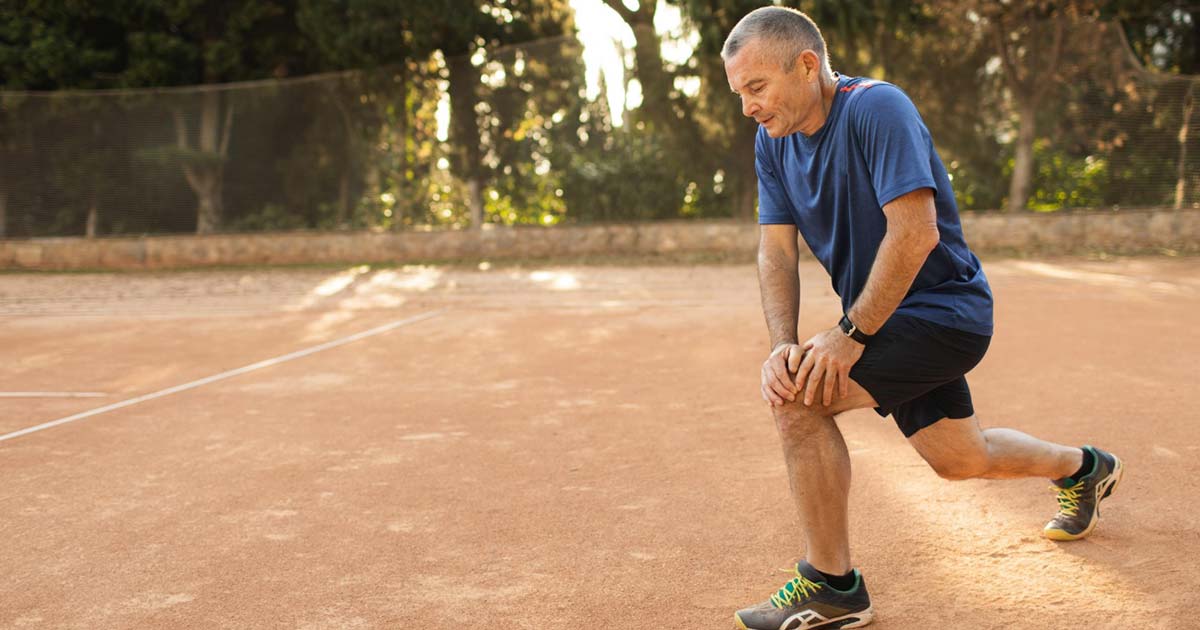Movement Is Medicine: Physical Activity and Exercise
Advice to improve your movement, fitness, and overall health from the world's #1 in orthopedics.
"Move more and sit less." That advice from the U.S. Centers for Disease Control and Prevention1 is timeless and true. Regular physical activity, including structured moderate to vigorous exercise every week, has enormous benefits.

Physical Activity vs. Exercise vs. Fitness: What's the Difference?
Physical activity is any bodily movement that involves your muscles and expends energy. That includes simple movements such as climbing stairs, walking to work, raking leaves, strolling with your dog or playing with your kids. Exercise is physical activity that is planned, structured and repetitive. Examples include bicycling, swimming, using an elliptical trainer, brisk walking and running.
Fitness is the goal of exercise. It means improving the health and efficiency of the various systems of your body, including:
- Strengthening muscles and bones
- Stabilizing joints
- Improving endurance through better heart and lung health
The more "load" you place on your body with regular exercise, the stronger these systems become. If you stick with it, you'll feel improvement. Daily activities will become easier. Going up stairs won't leave you feeling winded. Walking will become more fluid and invigorating.
Moving through the Ages
As you get older, your body undergoes natural changes that underscore the need for regular exercise.
- 20s-30s: You start losing lean muscle mass and your rate of bone-building starts to slow.
- 40s-50s: Loss of muscle mass and bone-building rate further decrease. Hormonal changes, such as those associated with menopause, can accelerate this process. Your body fat percentage starts to climb.
- 60s and older: Bone health becomes very important as osteoclastic activity (the breakdown of bone) rises and osteoblastic activity (the building of bone) drops.
Other normal changes in your body systems occur as you enter middle age:
- Cardiovascular: Your blood vessels naturally become stiffer as you age, raising your risk of high blood pressure. It is often called "the silent killer" because you may have no symptoms. Be sure to see your doctor each year to have your blood pressure monitored and take any hypertension medications that are prescribed if you do have high blood pressure.
- Neurologic: Balance becomes a bit harder as you get older. There is more "postural sway"; your body may take up more space, teetering when you balance on one foot. You may find yourself holding railings more often for support as you go up and down stairs.
- Musculoskeletal: Many people over age 50 have some degree of osteoarthritis, which may inhibit movement or range of motion. Height loss and hunched posture are not uncommon in the later years as spinal disks dehydrate and become compressed. Your risks of osteopenia (reduced bone density) and osteoporosis (bone weakening due to low bone mass) rise.
This is why a program integrating cardiovascular exercise, strength training, and flexibility is so important, especially in older age.
- Cardiovascular exercises such as walking, stair climbing, elliptical training, swimming and bike riding enhance heart and lung health, build stamina and promote blood flow to your muscles.
- Resistance exercises such as weight training and working with elastic exercise bands build muscle mass, promote bone growth and provide stability to your joints. Random movements performed safely, such as skipping or quick lateral movements while walking, can also boost bone health.
- Stretching enhances flexibility, boosts blood flow to your muscles and reduces your risk of injury. Activities such as yoga and t'ai chi can promote flexibility, enhance balance and improve posture.
Time to Get FITT
If you haven't exercised before or it’s been a while, it's best to get clearance from your doctor about what is and isn't safe for you to do. This is especially important if you are living with a chronic illness, being treated for cancer, are pregnant or recovering from a serious illness. The American College of Sports Medicine publishes guidelines for exercising, including special guidance for people with health issues.
Scheduling an assessment with a physical therapist, exercise physiologist or physiatrist (a physician who specializes in physical medicine and rehabilitation) is an excellent way to learn about your strengths, range of motion and areas where you can improve and discuss the best exercises and regimen for you. Your exercise routine should ideally aim to adhere to the FITT principle:
- Frequency: How often are you doing an activity?
- Intensity: How hard are you working?
- Time: How long are you doing it for?
- Type: What kinds of exercise do you enjoy and which are recommended for your health?
National guidelines recommend the following weekly exercise goals for healthy adults:
- 150 minutes of moderate-intensity exercise, such as walking, playing doubles tennis, taking a gentle bike ride or water aerobics OR 75 minutes of vigorous exercise, such as running, swimming laps, riding a bike fast or on hills, singles tennis or basketball
- 2 to 3 days of strength training (resistance exercises)
How hard should you be working? A simple way to know is the talk test. With moderate-intensity exercise, you can talk but you can't sing. With vigorous exercise, it's challenging to get even a few words out. The "perceived exertion scale" (rated from 6 to 20) is another approach:
- 6 = being at rest, such as sitting
- 20 = the hardest activity you've ever done, such as running up an incline
- 13 to 16 = a good range to aim for
Check out the Physical Activity Pyramid to see which kinds of activities you should do and how often.
Staying Motivated
It can be overwhelming to think of all the components of an effective exercise routine. Think of these recommendations as goals, rather than starting points, and break up your workouts into smaller chunks if that works better for your schedule. Also remember that it can take weeks or even months of doing something before it becomes a habit, so try to stick with it.
Here are some other ways you can fit physical activity into your day:
- Start your day with 10 minutes of gentle yoga stretches. (Look online for guided videos, such as yin yoga.)
- Get off one or two subway or bus stops earlier and walk the rest of the way to your destination.
- Take stairs instead of the elevator, even if it's just part of the way.
- Park farther away from a store when you are pulling into a parking lot so you'll get some extra steps.
- While watching television, march in place, stretch and/or repeatedly sit and stand from a chair while holding two cans of soup (for extra resistance).
The key to motivation and success is balance. Be kind to yourself. Aim for full pain-free motion. Listen to your body and ease up if you are feeling sore, then resume your activities. Choose activities you enjoy and consider those that enable you to spend time with friends and family, such as taking walks. Every step you take is a step toward better well-being and good health.
This article is from the Health Connection: Movement is Medicine issue and brought to you by Community Education & Outreach.
Footnote: How much physical activity do adults need? | Physical Activity | CDC
Published 8/30/2021



